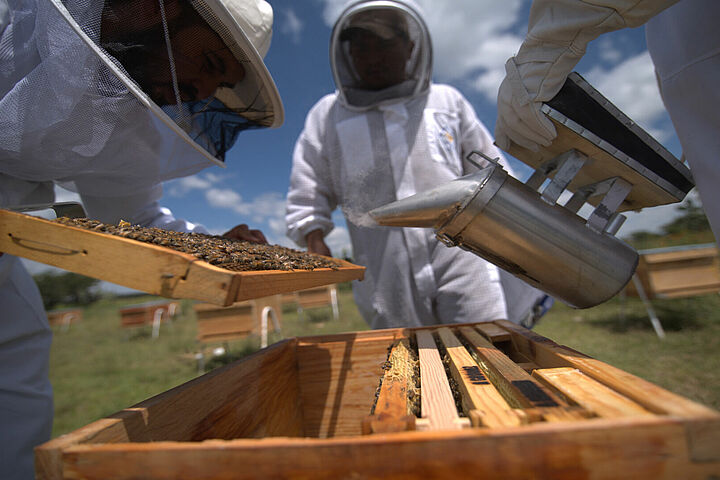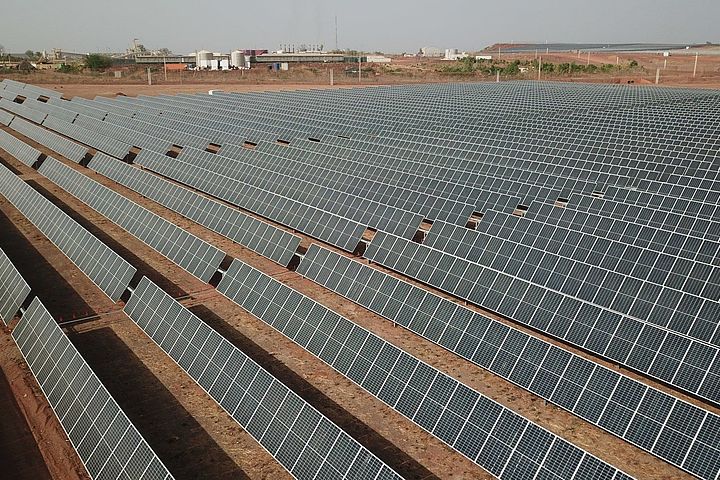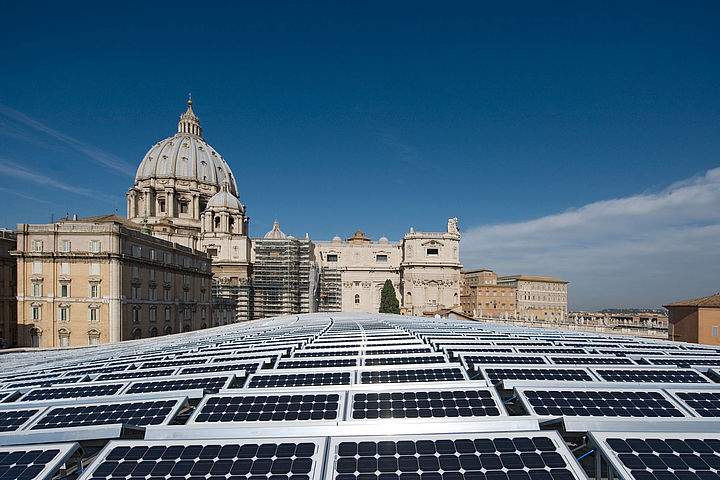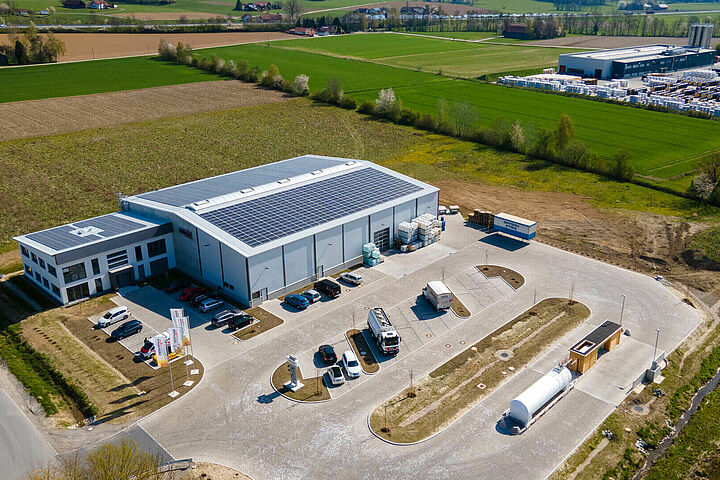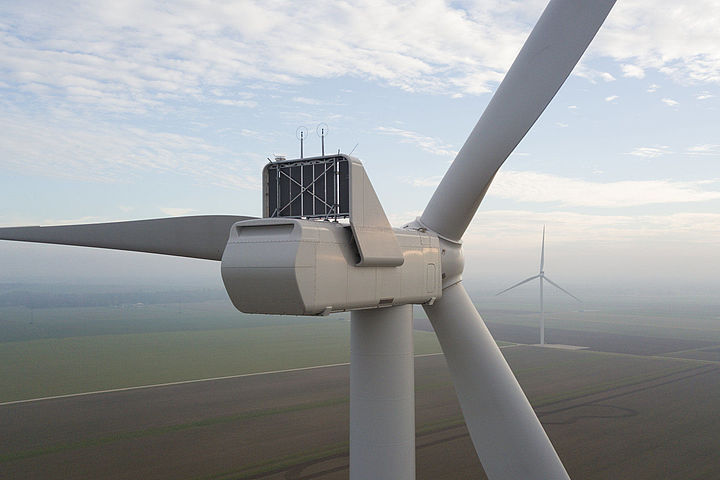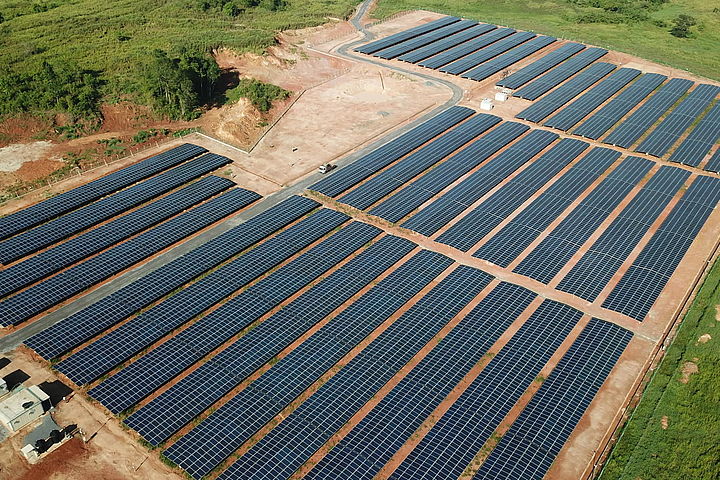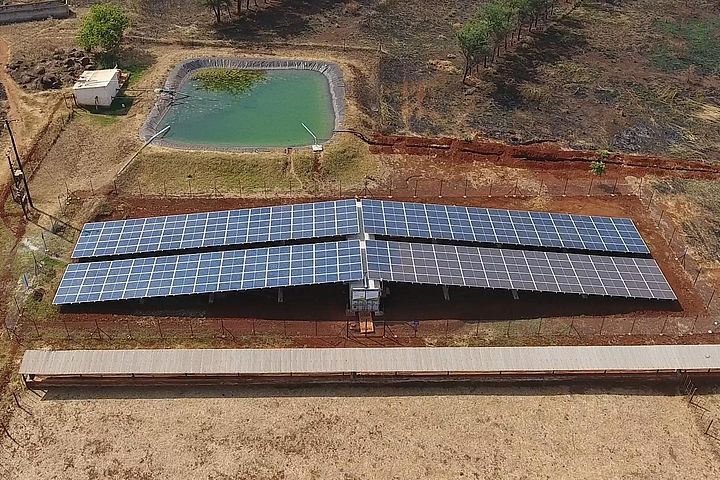Pushing for zero-carbon solar park construction
01—
Setting the scene
Solar power is changing the world, a cornerstone of our renewable future. 2020 saw nearly 153,000 MW of clean energy produced in the EU, over 75,500 MW in the US, and a massive 254,000 MW in China. However, constructing the solar parks which produce all this power still leaves a noticeable carbon footprint.
But what if it didn’t?
BayWa r.e., together with our Dutch subsidiary GroenLeven, wondered how low we could take emissions on our own solar park construction projects. How much construction collateral could be recycled, repurposed to be part of the finished system? Could these parks even supply their own power in order to construct themselves?
It sounds ambitious. It was. We initially started with two floating solar sites at Zwolle and Sekdoorn, to set out to turn those ambitions into reality.
02—
Meeting the Challenges
At Bomhofsplas, we looked at everything from the PV modules themselves to the equipment our engineers used. All tools, appliances, and vehicles were electric. Power came from a small 600-panel satellite park, which charged a 600 kWh storage battery. When construction was almost done, that satellite park simply slotted into the main site like a puzzle piece.
It’s worth noting that this was a massive project, the largest such park outside of Asia by that time. Nearly 73,000 PV modules, 13 transformers, and 192 inverter boats represents a big concentration of technology. Optimising emissions on a project this size translates to a significant CO2 saving.
On our Sekdoorn site, we took the process even further. Conventional wisdom states you need some external power to kickstart a project. But by charging batteries directly from solar modules, we proved we can get things moving from zero. No help from the grid, no generators needed.
That thinking sums up the crux of the challenge here; how far could we push boundaries? How much of that conventional wisdom could we overturn? And what would that mean for the future of solar park construction?
Applying new ideas to one of the world’s biggest floating solar parks demonstrates trust and optimism. The technology works, it’s advancing rapidly, and it spells good news for the planet!
Willem Biesheuvel
Project Manager at GroenLeven
03—
The results
CO2 emissions were drastically cut across both projects. At Sekdoorn alone, we cut over 10 tonnes of CO2 by dispensing with the need for over 4,000 litres of diesel. That’s a saving of over €10,000 which would have been spent on bulky, now unnecessary equipment.
Best of all, these new processes didn’t impact the kind of project efficiency we’re known for. The enormous Zwolle site was completed in less than eight weeks, Sekdoorn in six. These optimisations and extra efficiencies don’t have to come at a cost to the bottom line and today all our floating solar parks are built this way.
Looking to the future, we see these projects as an ideal proof of concept and our goal is to eventually build all our solar projects globally with net zero emissions. When we achieve this, it will represent a massive boost to the case for solar and a tangible advancement in our global fight against climate change.

It’s a testament to our willingness to innovate and build a more compelling case with every step we take. Construction projects which power themselves would have seemed like fantasy a few years ago. Now they’re within our grasp.

